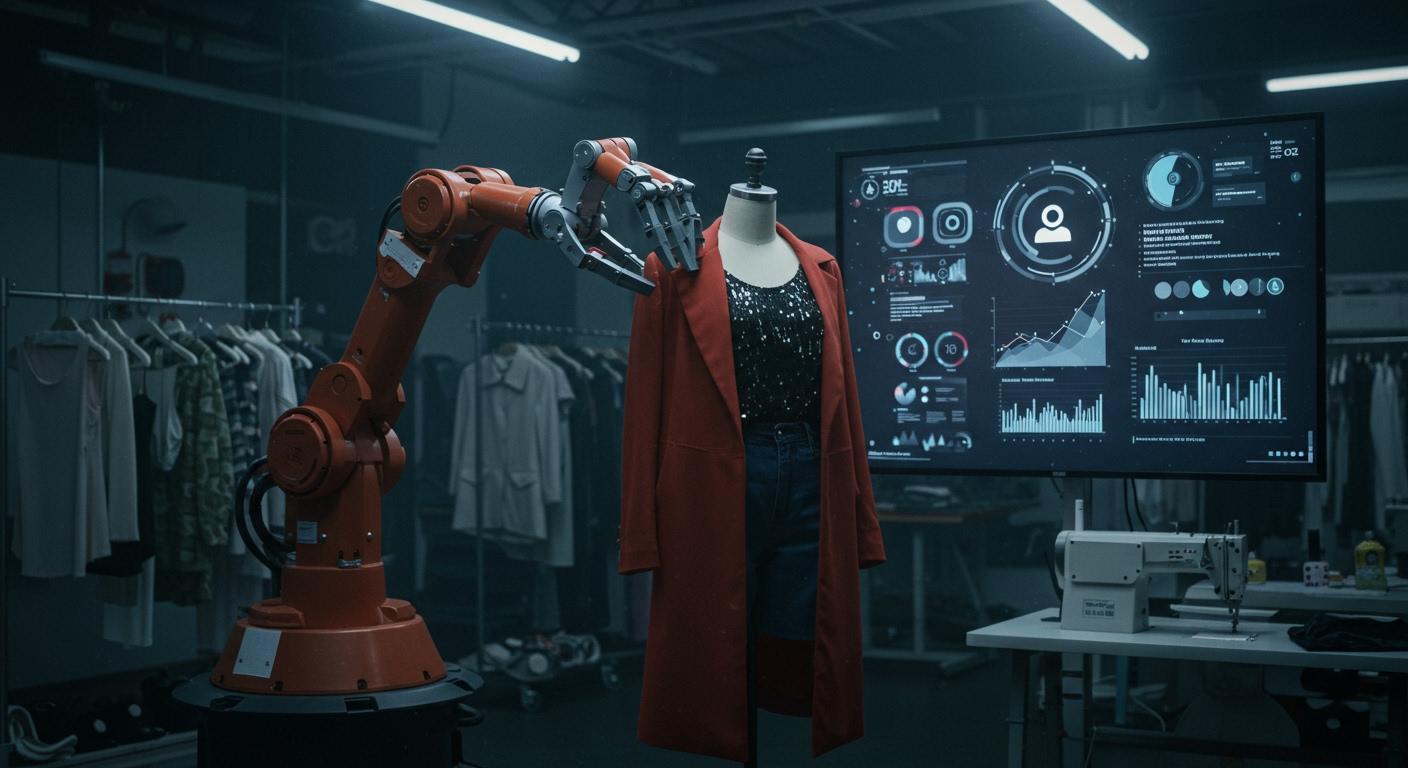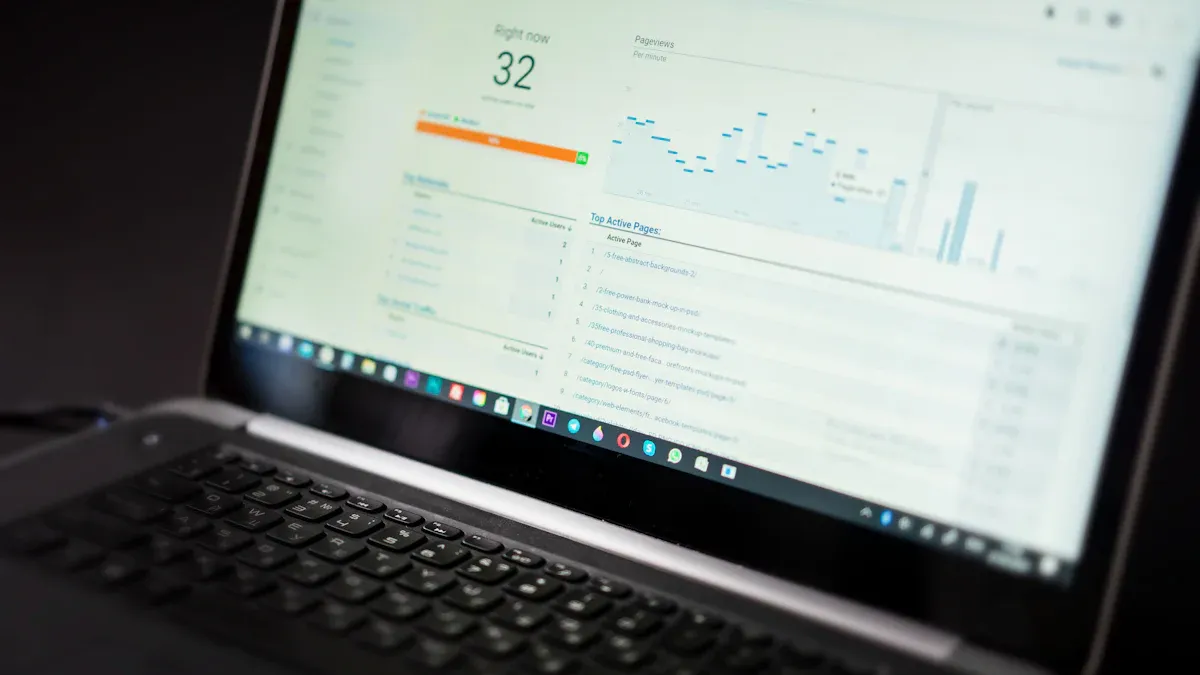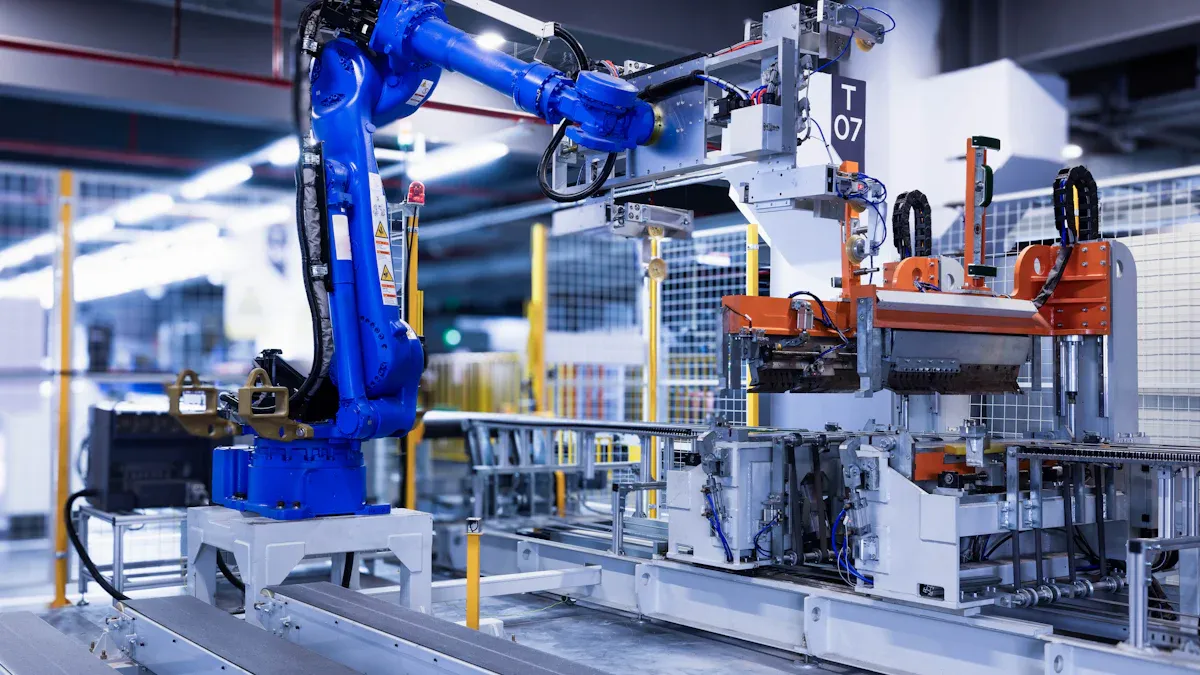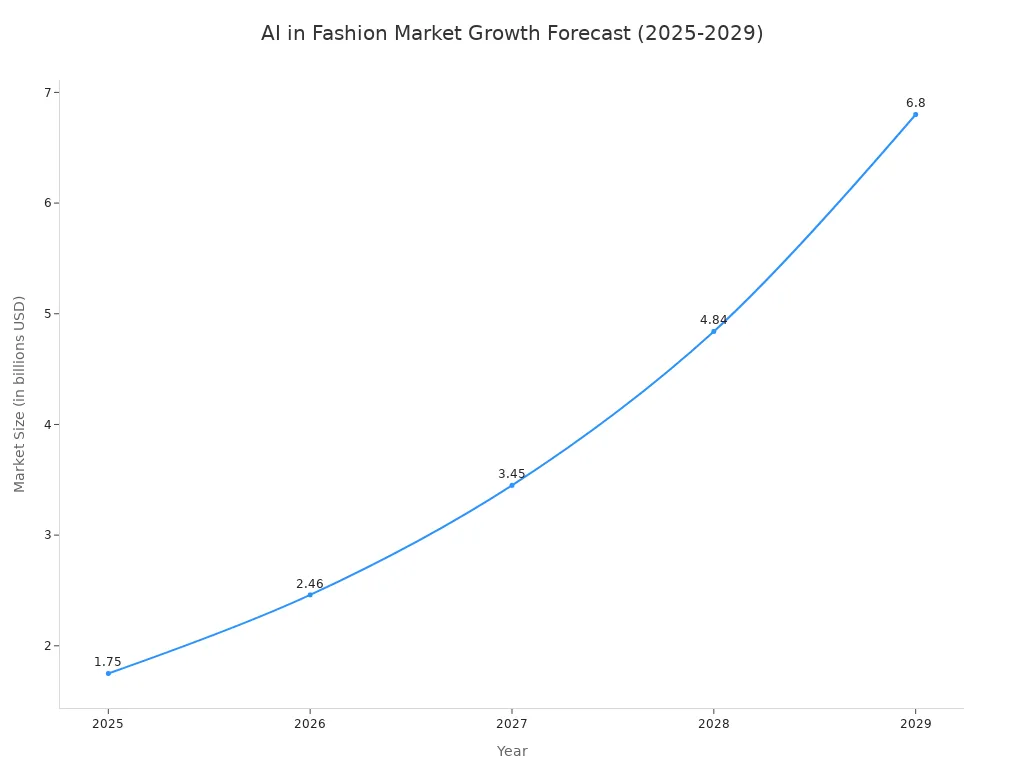How AI handles viral trends in fast fashion

An AI system empowers fast fashion brands to master viral trends. This technology combines rapid trend detection with precise ai fashion trend forecasting and automated supply chain management. The approach helps companies capitalize on fleeting social media trends. This advanced AI forecasting allows the fashion industry to turn a popular trend into commercial success.
The use of AI significantly minimizes financial risks. Brands reduce overproduction and missed sales. Effective ai fashion trend forecasting helps manage inventory, which is how ai handles viral trends in the fashion world.
How AI Handles Viral Trends in Real-Time

The process of how AI handles viral trends begins with constant, automated monitoring. AI systems perform real-time data analysis across the internet. This technology gives the retail industry a live view of the digital world, ensuring no emerging trend goes unnoticed.
Scanning the Digital Landscape
AI algorithms continuously scan social media platforms, blogs, and online forums. This AI technology is always watching for new trends. Platforms like Heuritech process millions of social media images daily to find emerging trends in fashion. This massive data collection is the first step for any brand in the market looking to capitalize on a viral moment. The AI uses specialized tools for this large-scale analysis.
| Tool/Platform | Function | Social Media Focus |
|---|---|---|
| PromptCloud | Scrapes live web and social data for real-time microtrend detection. | TikTok, Instagram |
| NextAtlas | Blends social data with consumer polling for deeper insights. | General social platforms |
| Social Media Text Mining | Uses semantic analysis to track trend shifts and consumer sentiment. | General social platforms |
Identifying Key Items with Image Recognition
After spotting a potential trend, the AI must identify the specific products involved. It uses image recognition to analyze photos and videos. This AI can detect specific clothing attributes like patterns, silhouettes, and colors. Models such as YOLOv8 help automate clothing recognition for retail. This allows a fashion brand to understand exactly what items consumers are excited about.
AI accuracy is impressive but has limits. For example, some AI models achieve up to 80% accuracy in basic fabric classification. However, they still face challenges identifying subtle details like specific button types or exact Pantone colors.
Applying NLP for Context
Understanding what is trending is only half the battle. The AI also needs to understand why. This is where Natural Language Processing (NLP) comes in. The AI performs analysis on text data from comments, reviews, and posts. This analysis helps reveal the consumer motivation behind a trend. For instance, NLP can detect if a trend is popular because it is linked to sustainability or a particular celebrity. This context is vital for the market. Key NLP techniques include:
- Semantic Network Analysis: Identifies keywords and their connections to see what ideas are linked to a fashion trend.
- Topic Modeling: Uncovers the main themes and topics of conversation around a collection or item.
- Sentiment Analysis: Evaluates consumer feelings toward a brand or product.
Gauging Public Sentiment
Finally, the AI quantifies the excitement around a trend. It gauges public sentiment by classifying online conversations as positive, neutral, or negative. This analysis provides a clear metric for a trend's potential success. A high ratio of positive to total mentions signals a strong market opportunity for the fashion retail sector. Brands use this data to decide whether to act on a trend. A common formula to measure this is:
Sentiment Score = (Number of Positive Mentions) / (Total Number of Mentions)
This data-driven approach is central to how AI handles viral trends, turning social media buzz into a calculated business decision for any consumer-focused market.
The Power of AI Fashion Trend Forecasting
Effective ai fashion trend forecasting is a game-changer for the retail industry. This technology helps brands make smart data-driven decisions. AI-powered demand forecasting allows companies to reduce inventory waste by up to 50%. This process minimizes stockouts and overproduction in a volatile market. The core of ai fashion trend forecasting is its ability to turn massive data sets into actionable market insights for the fashion world.
Predicting Demand with Machine Learning
AI uses machine learning for accurate demand forecasting. Deep Learning models, such as LSTM, are highly effective for this task. These advanced AI systems analyze product features like color and style alongside promotional data. This predictive analytics approach provides a huge advantage over older methods. The AI delivers precise forecasting, which is crucial for managing new products in the fast-paced fashion market. This level of analysis supports better consumer behavior prediction.
Analyzing Historical Data
Strong ai fashion trend forecasting relies on comprehensive historical data. An AI analyzes many data points to understand past trends and inform future forecasting. This analysis is key to successful fashion forecasting. Key data sources include:
- Historical sales figures and seasonality nuances
- Social media feeds and web search trends
- Weather patterns and global events
- Consumer preferences from e-commerce behavior
This detailed data analysis allows the AI to build a complete picture of the market. It connects past consumer behavior to future market opportunities, making ai fashion trend forecasting an essential tool for any retail brand.
Differentiating Fads from Lasting Trends
An AI can distinguish between a short-lived fad and a lasting trend. The AI studies online purchasing data and consumer behavior to spot early signals of change. It tracks what people search for and discuss online. For example, the AI can identify negative sentiment using terms like "overdone" to signal a trend's decline. This helps the retail market avoid investing in emerging trends that lack staying power. This consumer behavior prediction is vital for long-term success in the fashion market. The AI helps the market focus on trends with real potential.
The Future of Fashion Forecasting
The future of ai fashion trend forecasting looks even more integrated. New technology will continue to shape the fashion market. We can expect to see more AI-generated clothing and virtual fashion shows. Tools like GeoStyle AI are already using millions of public images to identify neighborhood-level fashion trends. This evolution in fashion forecasting will lead to better inventory management and a more sustainable fashion industry. The AI will continue to drive innovation in forecasting for the retail market.
Automating the Supply Chain with AI

Once an AI identifies a viral trend, it automates the supply chain to bring products to market quickly. This automation is the engine of the fast fashion model. It connects trend forecasting directly to production and distribution. Established retail brands like Zara and H&M use AI to manage their supply chains, but ultra-fast fashion companies take it a step further. This technology allows for incredible speed and real-time adaptation.
Triggering Small-Batch Production
The AI system triggers instant, small-batch production orders when it detects a promising trend. Shein provides a prime example with its Large-scale Automated Test and Reorder (LATR) model. The process works in clear steps:
- An AI identifies emerging trends from online data.
- The system initiates a small production run of 100–200 units.
- The AI monitors real-time sales and customer feedback for that item.
- Only top-performing products move to mass production. This approach allows a fashion brand to test the market with minimal risk and inventory commitment.
Dynamic Inventory Restocking
AI also manages dynamic inventory restocking. The system automates reorder decisions by analyzing multiple data points in real time. This inventory optimization ensures popular items stay in stock without creating excess inventory. Key data inputs for the AI include:
- Current and projected sales velocity
- Real-time stock levels
- Supplier lead times and constraints
- Regional purchase cycles This level of inventory management is crucial for handling fast-moving fashion trends. The AI makes forecasting more precise.
Optimizing Warehouse Distribution
Effective inventory optimization requires intelligent distribution. An AI optimizes the warehouse to get products to high-demand areas faster. The AI uses forecasting to predict which geographic regions will have the most buyers for a specific trend. It then ensures inventory is allocated to those locations. This optimization reduces shipping times and improves customer satisfaction in the competitive retail industry. The AI even plans the most efficient picking and packing routes inside the warehouse.
Identifying Emerging Trends
The supply chain creates a powerful feedback loop for the AI. Data from the supply chain helps the AI refine its forecasting for emerging trends. For instance, high return rates for a specific item can signal a problem with fit or quality. A spike in sales in one region can highlight a new micro-trend. This constant flow of information makes the AI smarter over time, improving its fashion forecasting and inventory management for the next wave of trends. This continuous optimization is vital for the retail sector.
Optimizing Pricing and Markdown Strategy
AI extends its influence beyond production into pricing and sales optimization. An AI system helps a fashion brand set the right price at the right time. This pricing optimization is critical for maximizing profit in a competitive market. The technology enables smart, data-driven decisions for the entire product lifecycle.
Implementing Dynamic Pricing
AI implements dynamic pricing to adjust product costs automatically. This strategy allows a fashion brand to respond to the market in real time. For example, the fashion retailer Farfetch uses an AI system for this purpose. Its AI adjusts prices based on demand and provides personalized recommendations to each consumer. This creates a flexible and responsive pricing model for the fashion market.
Adjusting Prices to Real-Time Demand
An AI adjusts prices based on real-time market signals. Some systems make thousands of price adjustments daily during sales events. This constant analysis helps a brand stay competitive. Retailers using AI-driven pricing have seen gross profits increase by 5–10%. This continuous optimization ensures prices reflect current consumer demand and inventory levels, which is a huge advantage in the fast-moving fashion market.
Timing Optimal Markdowns
The AI also determines the best time for markdowns. The system performs analysis on many data points to find the perfect discount strategy. Key factors include:
- Current inventory levels
- Historical sales data
- Product lifecycle stage
- Seasonality and market trends
This detailed analysis helps a brand clear inventory without sacrificing too much profit. It is a core part of modern inventory management. The AI makes these crucial data-driven decisions for the market.
Efficiently Clearing Inventory
Finally, AI offers smart ways to clear remaining inventory. Instead of just deep discounts, the AI uses dynamic allocation. It predicts where the remaining inventory will sell best and moves it to that market. This advanced inventory optimization reduces waste and protects margins. This approach to inventory management makes the entire supply chain more efficient. The AI turns leftover stock into a final opportunity for the market.
AI provides an integrated, end-to-end system for navigating the volatile world of viral fashion. The key to success is not just one tool. It is the seamless combination of several AI functions.
This technology combines rapid trend detection, ai fashion trend forecasting, automated inventory, and dynamic pricing. This is how ai handles viral trends, turning social media buzz into commercial success.
This technological agility defines the modern fast fashion model. The growth of AI in fashion forecasting is significant, with the market expanding rapidly. This AI is a key trend for the future of fashion, and ai fashion trend forecasting will continue to shape how brands handle new trends.

FAQ
What is the main role of AI in fast fashion?
AI's main role is to increase speed and precision. The technology helps brands quickly find new trends. It also predicts customer demand. This process allows companies to sell popular items while they are still trending, turning social media buzz into profit.
How does AI help reduce waste in the fashion industry?
AI reduces waste by improving accuracy. It helps brands avoid making too many clothes that no one buys.
- AI predicts exact demand for new items.
- It triggers small test batches before mass production.
- It optimizes inventory to prevent overstocking.
Can small fashion brands use AI for trend forecasting?
Yes, smaller brands can use AI. Many companies now offer AI trend forecasting as a service. This access allows smaller players to compete with larger brands. They can make smarter, data-driven decisions without building their own complex systems.
What are the main AI technologies used in fashion? 🤖
Fashion brands use several key AI technologies. Image recognition identifies specific clothing items in photos. Natural Language Processing (NLP) understands the context behind trends. Machine learning models then use this data to forecast demand and manage the supply chain effectively.
See Also
Leveraging Machine Learning to Forecast Fashion Trends and Drive Sales Growth
Innovative AI Solutions: Sustainable Fashion for a Greener Global Future
Optimizing Fashion Supply Chains: Predictive Analytics for Balanced Inventory
Achieving Precise Fashion Predictions Through Comprehensive Sales Data Analysis
Transforming Apparel: Strategic Paths from Manufacturing to Brand Evolution